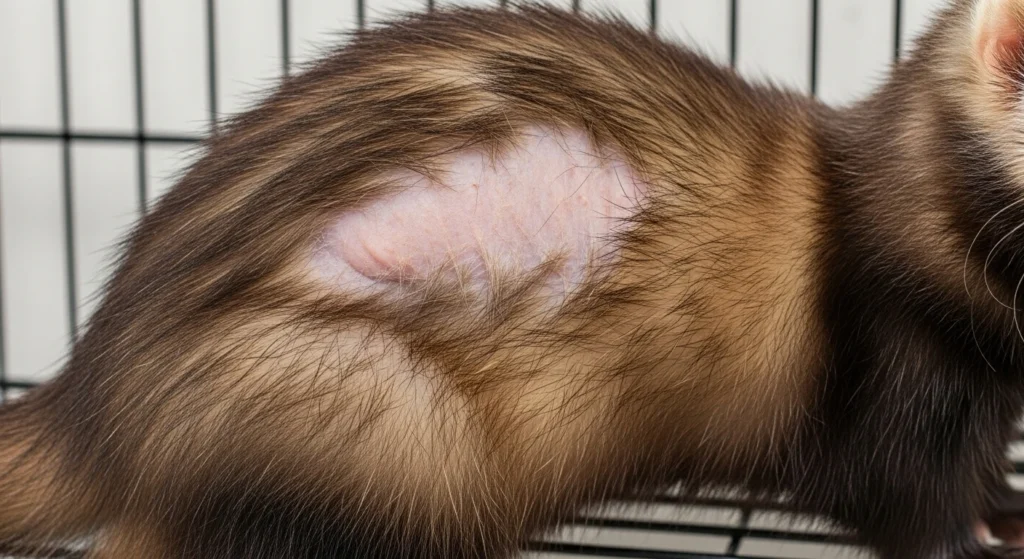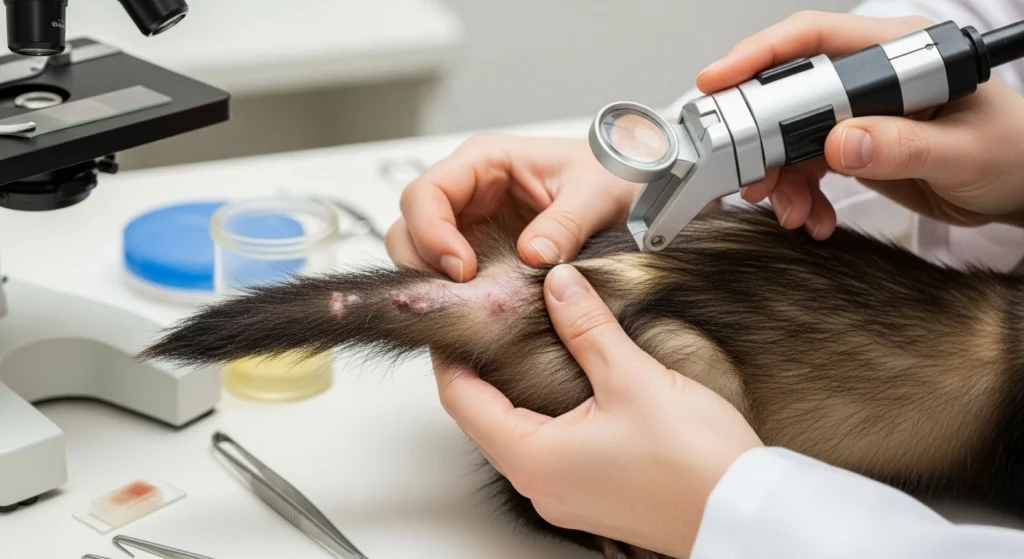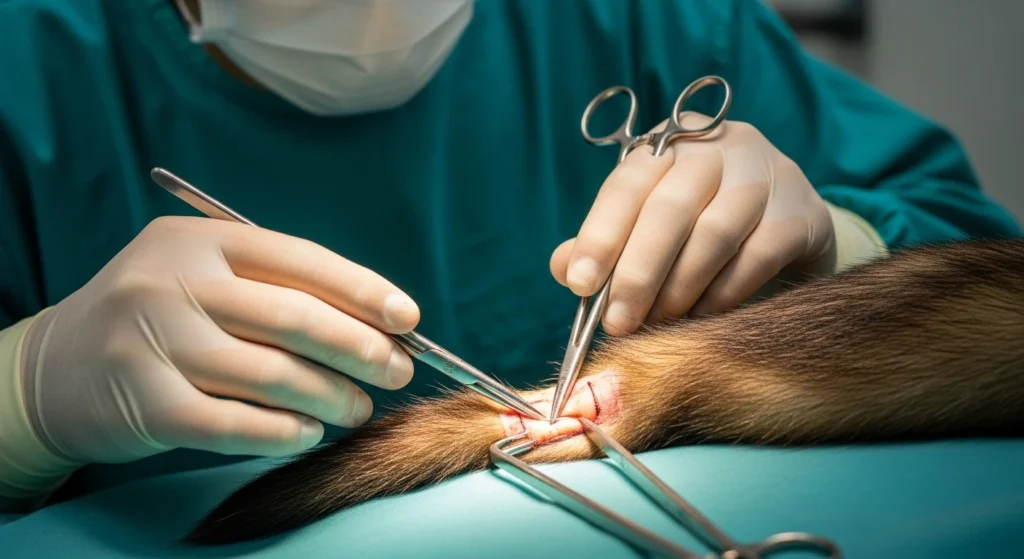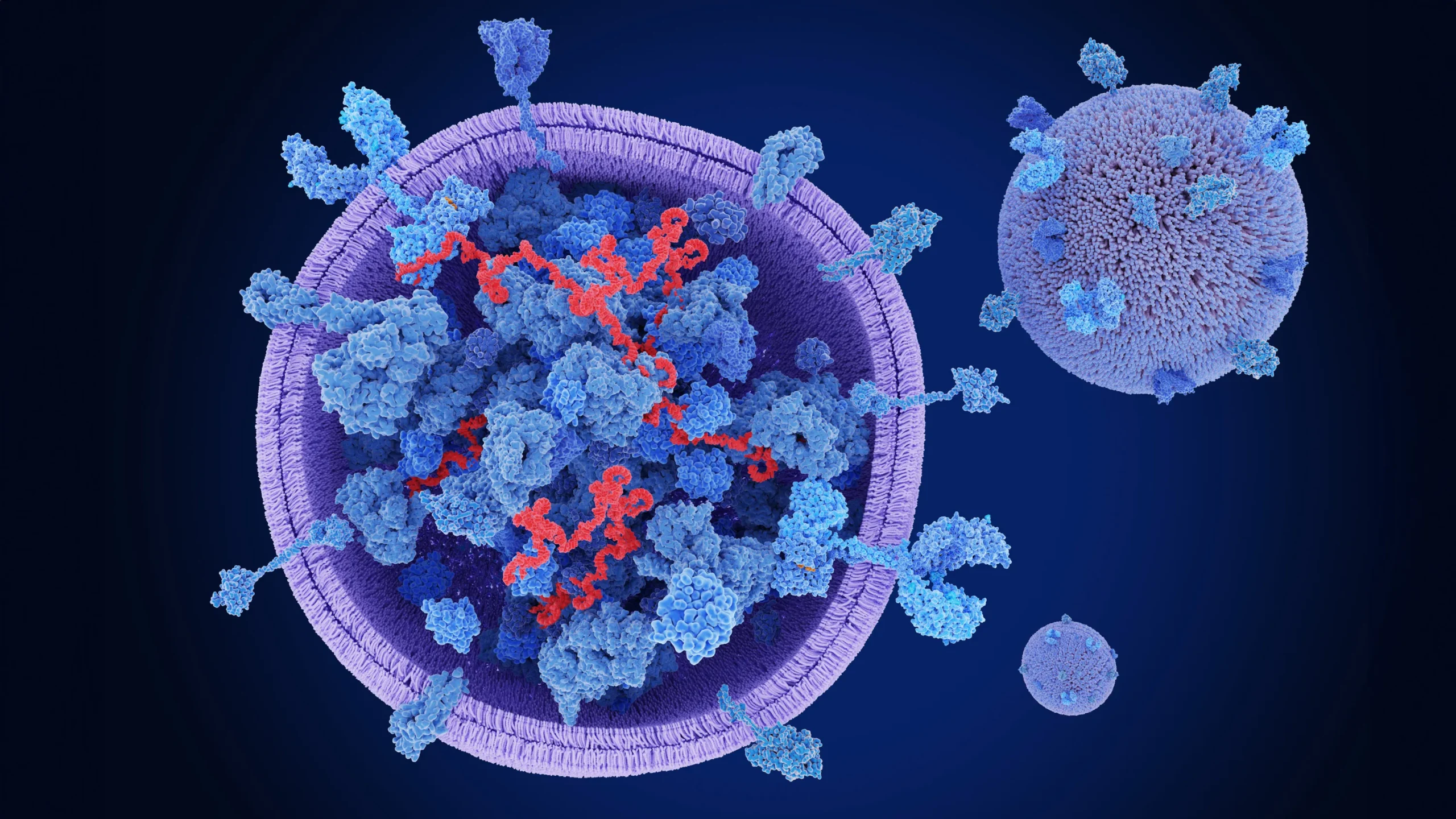Worried about sudden hair Loss on Ferrets Tail? This common issue—often called “rat-tail”—can be more than just shedding. It might indicate adrenal gland disease, parasites, or even stress. In this guide, you’ll learn how to tell the difference between normal seasonal shedding and more serious problems, what treatments are available, and how to prevent tail …
Worried about sudden hair Loss on Ferrets Tail? This common issue—often called “rat-tail”—can be more than just shedding.
It might indicate adrenal gland disease, parasites, or even stress. In this guide, you’ll learn how to tell the difference between normal seasonal shedding and more serious problems, what treatments are available, and how to prevent tail alopecia in ferrets.
Our advice is based on veterinary expertise and real-life recovery outcomes, so you know you’re in safe hands.

Understanding Hair Loss on Ferrets Tail
Not all ferret tail hair loss is cause for panic. Let’s start by understanding what’s normal and what isn’t.
Hair Loss on Ferret’s Tail vs. Seasonal Shedding

“Rat-tail” describes thinning or baldness starting at the tip of the tail. It can be a harmless seasonal shedding pattern, especially during warmer months. However, if it spreads or recurs frequently, it could signal a deeper issue.
- Normal shedding: Happens symmetrically during seasonal changes.
- Problematic hair loss: Patchy, sudden, or persistent, especially outside shedding seasons.
Common Causes of Hair Loss on Ferrets’ Tails
There are several possible causes behind tail alopecia in ferrets. Identifying the right one is key to recovery.
Adrenal Gland Disease Cause of Hair Loss on Ferret’s Tail
Adrenal gland disease affects ferrets typically over 3 years old. It causes hormonal imbalances, leading to hair loss starting at the tail and moving up the body.
- Signs: Bald tail, enlarged vulva in females, aggression or mating behavior in neutered males.
- Cause: Overproduction of sex hormones due to adrenal tumors or hyperplasia.
Parasites (Fleas & Mites)
External parasites cause constant itching and over-grooming.
- Look for: Flea dirt, scabs, excessive scratching.
- Areas affected: Tail, neck, back, and hindquarters.
Treatment involves topical flea medication and deep cleaning of the ferret’s habitat.
Fungal or Bacterial Infections
Ringworm or staph infections can also lead to patchy hair loss.
- Symptoms: Red, irritated skin; flaky or crusty patches.
- Diagnosis: Requires a fungal culture or skin scraping.
Nutritional Deficiencies & Stress
Low-protein diets or a lack of fatty acids can weaken coat health. Likewise, stress from poor housing or sudden environmental changes can trigger alopecia.
Environmental Triggers
Ferrets need light cycles similar to nature. Extended exposure to artificial lighting can disrupt hormonal balance and lead to hair loss.
- Tip: Maintain 8–12 hours of darkness daily to mimic natural rhythms.
Diagnosing the Underlying Cause of Hair Loss on Ferrets Tail

A proper veterinary diagnosis is essential. Tail hair loss might look the same across different conditions, but treatment varies drastically.
Step-by-Step Diagnosis
- Physical exam – Assess the pattern and condition of the skin.
- Skin scraping – Check for parasites or fungal infections.
- Blood tests – Evaluate adrenal hormone levels.
- Ultrasound – Identify adrenal enlargement or tumors.
Expert Insight
“Ferrets with adrenal disease may still act normally at first. Early diagnosis improves outcomes and reduces long-term complications,” says Dr. Emily Ford, Exotic Pet Specialist.
Treatment and Management Options For Hair Loss on Ferrets Tail
Your vet will recommend a treatment based on the underlying cause.
Medical Treatment for Adrenal Disease
- Deslorelin (Suprelorin) Implant: A hormone-suppressing implant placed under the skin. Effective for 1 year.
- Lupron Injections: Monthly injections that reduce hormone production.
- Melatonin Supplements: Help with hair regrowth and light cycle regulation.
Surgical Removal

If tumors are advanced, adrenalectomy (surgical removal) may be advised. This is more invasive but often curative.
Treating Parasites and Infections
- Topical ivermectin or prescription flea treatments
- Antifungal creams or oral meds (for ringworm)
- Antibiotics for bacterial infections
Nutritional & Environmental Changes
- Switch to high-quality, protein-rich ferret food.
- Limit artificial light; allow dark, quiet sleeping areas.
- Reduce household stressors like loud noises or irregular routines.
Recovery Timeline and Expectations
Hair regrowth depends on the cause and treatment used:
| Cause | Expected Recovery Time |
|---|---|
| Seasonal Shedding | 3–4 weeks |
| Parasites/Infections | 2–6 weeks post-treatment |
| Adrenal Implants | Hair starts returning in 4–8 weeks |
| Surgery (Adrenalectomy) | Full coat within 2–3 months |
| Stress/Nutritional | 6–8 weeks with improved care |
Prevention and Long-Term Care
Preventing hair loss is easier than treating it. Here’s what works:
- Routine vet checkups (every 6–12 months)
- A balanced diet with protein and omega-3s
- Regulate lighting – mimic natural cycles
- Keep the habitat clean to avoid parasite infestations
- Minimize stress by maintaining predictable routines
FAQs on Hair Loss on a Ferret’s Tail
Is tail shedding always caused by adrenal disease?
No. While common, it could also be due to parasites, diet, or seasonal shedding.
Will the hair grow back after treatment?
Yes—especially if the underlying issue is treated early. Regrowth typically begins within 4–8 weeks.
Can I use cat flea treatments for my ferret?
Never without vet approval. Some products are toxic to ferrets.
When should I take my ferret to the vet?
If hair loss is spreading, comes with behavior changes, or doesn’t improve in a few weeks.
Speak to a Ferret Health Specialist Today
Tail hair loss can signal something serious—but with early action, your ferret can bounce back quickly. Book a consultation with Dr. Uzma Irfan, an ISHRS-certified surgeon, today to get expert diagnosis, treatment, and peace of mind.






